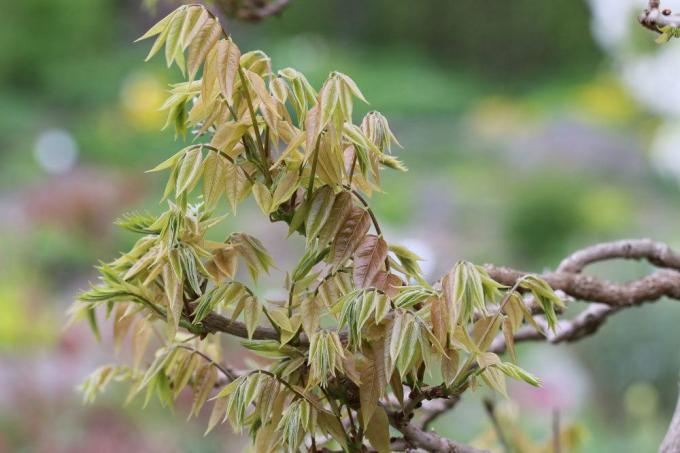
table of contents
- Location
- patience
- blossoms
- Frostbite
- Overwinter
Wisteria, also called Wisteria, impresses time and again with its flowering power and its enormous growth. Wisteria are in and of themselves very robust plants that can grow up to 30 meters high. It is therefore hard to imagine that even a slight frost would freeze the wisteria buds to death. Since late frosts can still be expected in April, you should be prepared for frozen buds every spring and know about the appropriate measures.
Location
Location and winter protection
Choose a sheltered location for the wisteria. A place in front of a south wall is ideal, as it radiates additional heat. Winter protection for the hardy climber is also recommended for the first few years at the new location.
patience
Are the flowers or If the buds of the wisteria froze to death, patience and a pampering program for the plant will help so that it can recover.
- regular supply of nutrients
- provide sufficient water
- Wait until the flowers are completely dry

blossoms
Cut off dried flowers
Then it's best to just give the plant time. As a rule, it recovers and sprouts again. In any case, give her until next year before you take more drastic measures.

Frostbite
Frozen shoots
Frost can freeze not only the buds and flowers of the wisteria, but also the shoots. They die off and then form what are known as dead wood on the plant. Since it is often not so easy to see at first glance how great the damage actually is, you can also wait a while before removing the frozen shoots. Once the situation has cleared up, the dead wood is simply cut off.
How to proceed with the plant is decided by the plant itself. If it is satisfied with its location and care, it will drive out again. Sprouting is very strenuous for the plant, so you should give it a few weeks. After all, she has to recover from the cold shock first.
Tip: Under no circumstances should you tear off frozen shoots. This practice inflicts long wounds on the plant. They take longer to heal and are a gateway for mushrooms and others Pests.

Frozen leaves
If the after-frost does not come until late in spring, with a bit of luck only the leaves of the wisteria will get caught. Although the frozen leaves do not look very attractive, you should leave them on the plant for now, because every cut is a wound for the plant, which has to heal.
If you leave the wisteria alone for the time being, it can recover from the cold snap. As soon as he has regained his strength, the frozen leaves can be removed. If they have already dried up, so much the better. This makes them easy to remove if they haven't already fallen off. At this point in time, if the weather is favorable, new leaves can often be seen.
Tip: Help the wisteria with a little pampering program.

Overwinter
Winter wisteria in the bucket
Despite its possible size, wisteria can also be grown in a tub. Since the roots are not as protected in the tub as in the ground, the plant should move to winter quarters for the cold season:
- Cold house
- garage
The plants can also stand in the dark. It is important that the substrate does not dry out completely. From February you should put the wisteria back into the warmth. So he can get used to the mild spring temperatures. But be careful, if there is a risk of late or night frost, you should bring the container plant back inside so that the plant or Do not freeze parts of plants.



